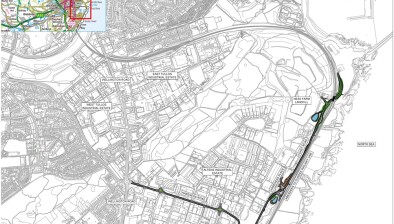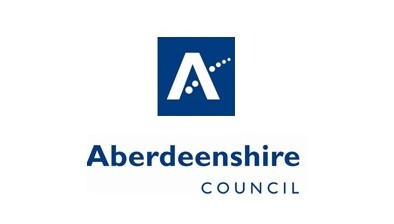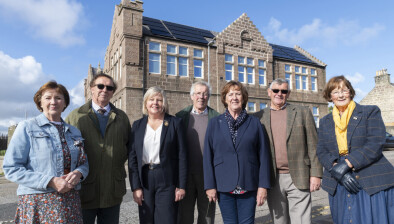At-risk Banff Bridge tops Aberdeenshire Council’s workbank prioritisation programme

Banff Bridge has been placed at the top of Aberdeenshire Council’s workbank prioritisation programme after serious structural issues were discovered during investigations.
Councillors on the Infrastructure Services Committee heard on Thursday last week that essential scour remedial and preventative works are required immediately to safeguard the vital A98 road across the River Deveron at Banff.
Built in 1780, the seven-span A-listed bridge had its alert status heightened to ‘Red’ – reflecting a high likelihood of closure within five years – to reflect the urgency of repairs which are earmarked at £3 million.
The works would involve the construction of rock rolls and rock mattresses at the base of each of the six piers and two abutments – mitigating against the potential risk of bridge collapse through the undermining of the foundations during exceptional river spate events.
As has been keenly felt in recent years, particular during repeated storms, such events are now considered more likely due to climate change.
Noting the current workbank programme position, councillors also heard that Aboyne Bridge has been upgraded to second in terms of urgency after significant concrete disintegration was discovered in the structure’s top deck.
The 84-year-old bridge has been closed to all motorised traffic since November last year and requires major structural remediation as a minimum at a cost of around £2.5 million.
The council’s bridges workbank prioritisation provides a framework for decision-making and is reviewed and updated to ensure it reflects the current condition of the bridge portfolio and the cumulative impact on the resilience of the wider road network.
There are 1,311 bridges in Aberdeenshire carrying a public road which equates to an average of a bridge every 2.7 miles of road.
Over the past four years the council has undertaken eight bridge replacements – including five of the six bridges lost in flooding at King Edward – and seven refurbishments have been also completed. However in recent years 14 bridges have been closed, with a further six being subject to weight restrictions and three now having width restrictions imposed.
It’s estimated that there are currently 111 (all black, red and amber) bridges that would require either replacement/restoration or major refurbishment, and that this figure is likely to increase.
Officers have advised that 23% of Aberdeenshire’s bridge stock is showing signs of significant deterioration with the Bridge Alert Status showing:
- Black - already closed to vehicles 14 (1%)
- Red - high likelihood closure in 5 years 14 (1%)
- Amber - medium likelihood of closure in 5 years 83 (6%)
- Yellow – likelihood of closure in 20 years 190 (14%)
Meanwhile, while the remaining 77% are not of current concern, this does not necessarily mean they are in good condition. However, budget availability coupled with sharp rises in construction costs has already impacted on the delivery of the planned works programme, with regular inspections having also highlighted concerns with increased deterioration rates at certain structures.
Chair of the council’s Infrastructure Services Committee, Councillor Alan Turner, said: “There is no question that the management of our bridges requires very careful consideration and this workbank prioritisation programme does just that – providing clarity for the public to see which bridges require the most immediate interventions.
“With unlimited funding we would, of course, want to see all our bridges repaired or replaced as required, but we have to face facts that we simply don’t have the budget to do that.”
Vice-chair Councillor Isobel Davidson added: “Given the significant budget restrictions we, as council, face each year to undertake replacements and improvements to the network, the efforts of our small yet dedicated bridges team to safeguard so many structures with the limited funding we can provide must be applauded.
“Only through a prioritisation programme such as this will we be able to track the condition of our bridges and the urgency with which repairs have to be made.”














